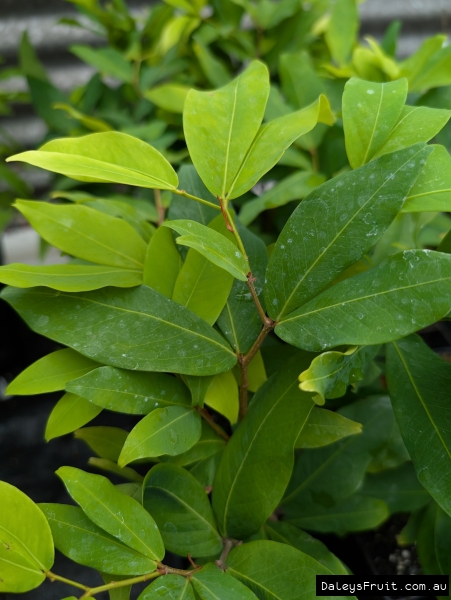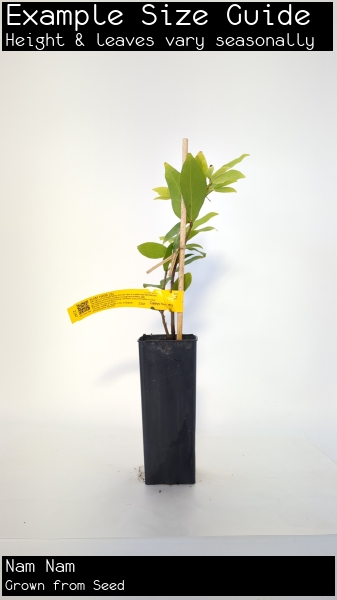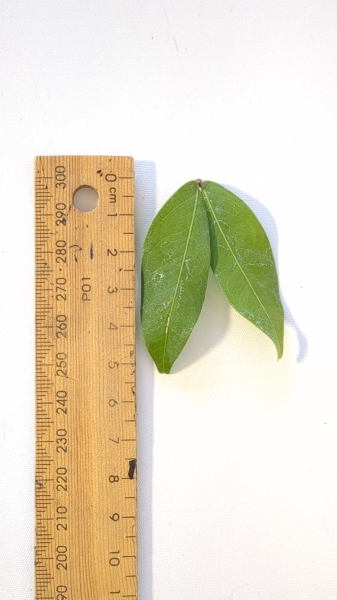
(1/4) Produce fruit on the trunk. Taste is Sour but include in fruit salad. Pickle the fruit Tropical and ornamental plant By
![Leaves of a small Nam Nam plant (All Rights Reserved)]()
(2/4) Leaves of a small Nam Nam plant (All Rights Reserved)
![Nam Nam For Sale]()
(3/4) Nam Nam For Sale
![Leaf of the Nam Nam]()
(4/4) Leaf of the Nam Nam
fullscreen1
Nam Nam
Cynometra cauliflora
Belonging to the bean family the nam nam is a small multi-stemmed tree. The texture of the fruit surface is rough and wrinkled, pale greenish/yellow and dull looking. The flesh is juicy and yellow in colour. It tastes sourish and has large seeds. The matu... Read Morere fruit can be eaten fresh or cooked with sugar to make sweets (compote). It can also be made into a fruit salad, pickled, or be used to prepare a special 'sambal.' The tree makes an attractive ornamental plant in home gardens and is also potted and grown as bonsai plant.Suited to tropical areas only
$49.00
Preferred Climate Tropical
Grown From Seedling
Max Height (when in the ground with good conditions) +10m
Can it Handle Frosts? Likes Temps above 5deg
Amount of leaves in Winter? All Leaves (Evergreen)
Fruiting/Harvest Months February, March
































